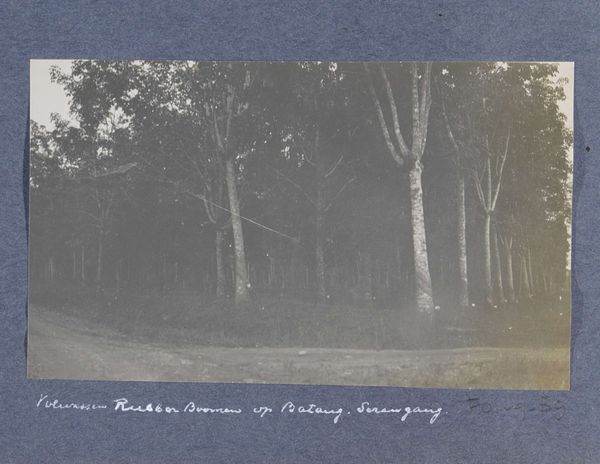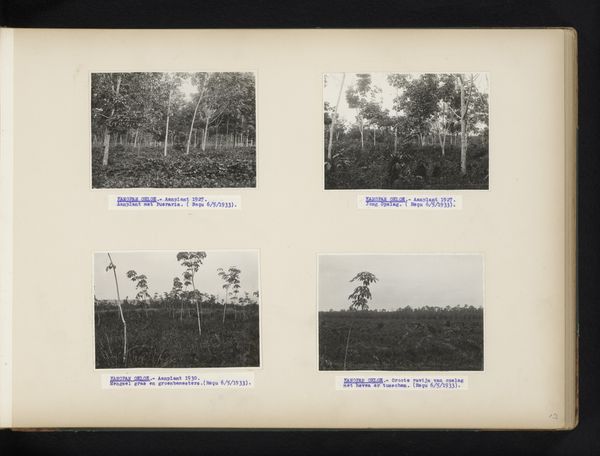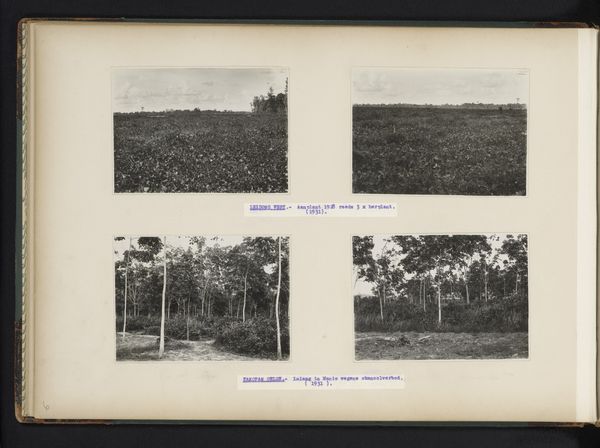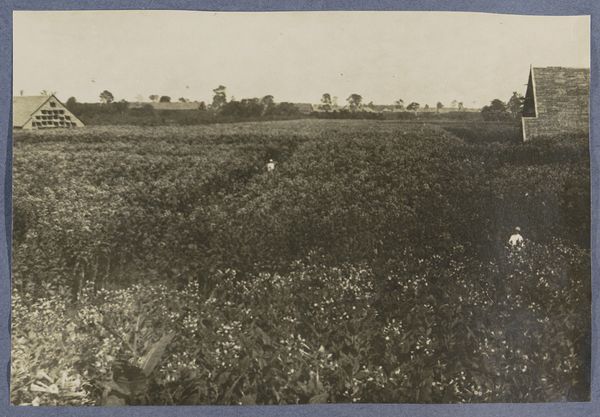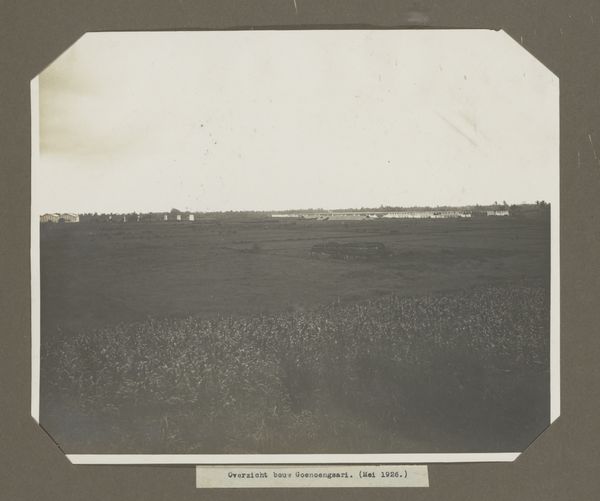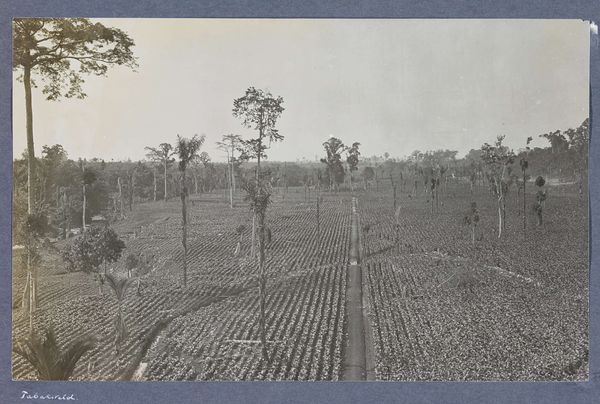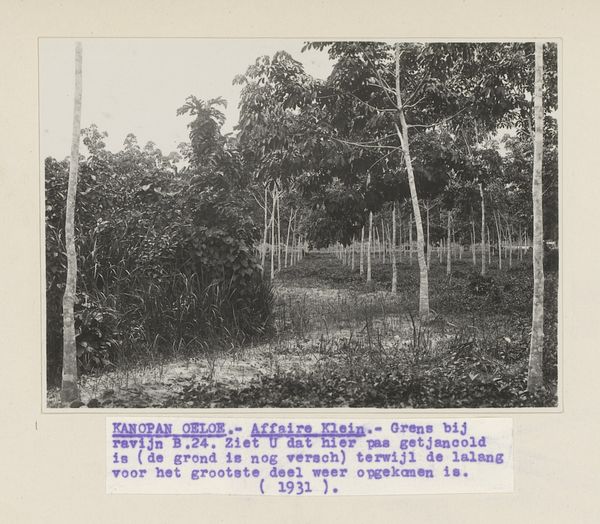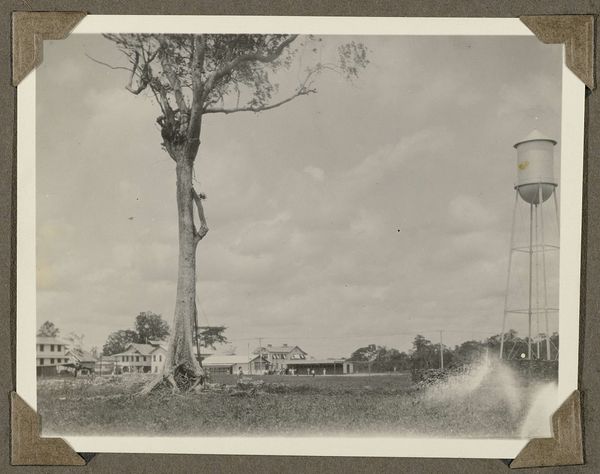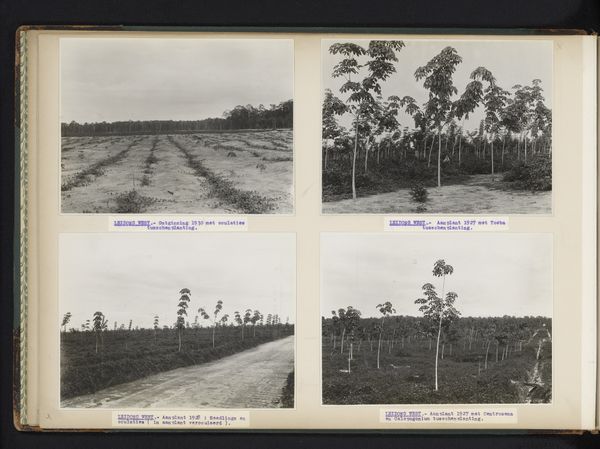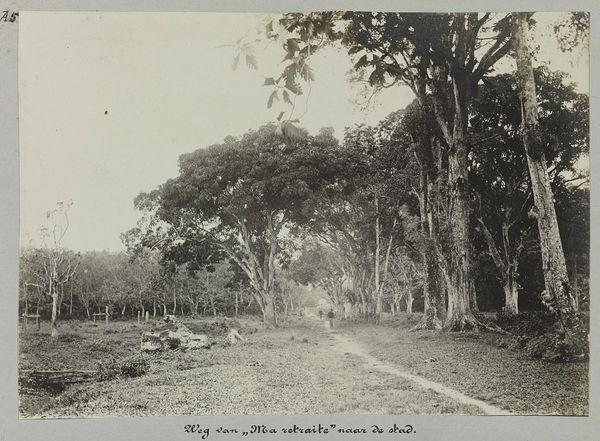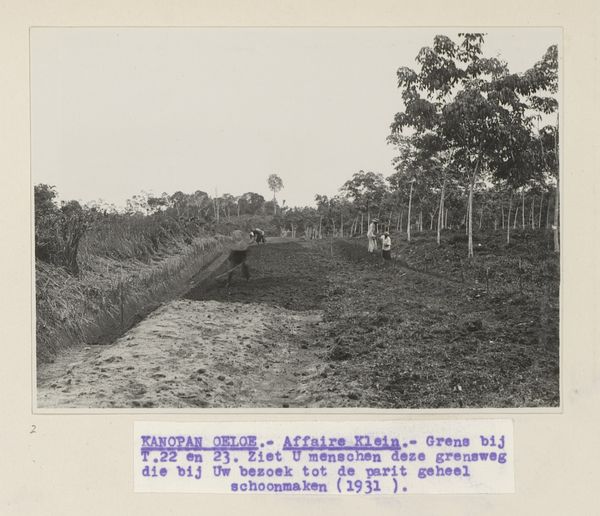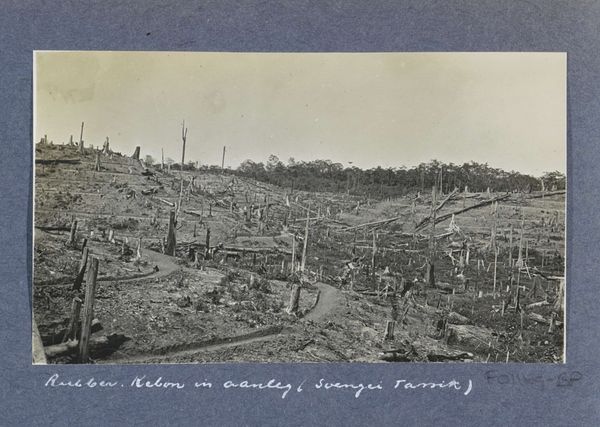
Vierjarige rubberaanplant van de onderneming Batang Serangang op Sumatra c. 1900 - 1920
0:00
0:00
anonymous
Rijksmuseum
photography
#
still-life-photography
#
landscape
#
photography
Dimensions: height 77 mm, width 132 mm
Copyright: Rijks Museum: Open Domain
Editor: Here we have an early 20th-century photograph, likely from between 1900 and 1920, titled "Vierjarige rubberaanplant van de onderneming Batang Serangang op Sumatra," showing a four-year-old rubber plantation on Sumatra. The repetition of the trees almost has a calming effect, but what strikes me is the stark, almost clinical view of the landscape. How do you interpret this work? Curator: What I see is a landscape charged with the history of colonialism. These meticulously planted rubber trees represent the exploitation of both natural resources and indigenous labor in Sumatra. The photograph isn't just a neutral observation; it's a document that unintentionally reveals the systematic transformation of the landscape for economic gain, a process that profoundly impacted local communities. Does it give you pause to think about how seemingly simple images can mask complex power dynamics? Editor: That's a very different reading than my initial reaction. So, the "clinical" feel isn't just an aesthetic choice, it's a reflection of a calculated, perhaps even ruthless, approach to land use? Curator: Precisely. The order and regimentation contrast sharply with the likely disruption and displacement experienced by the Sumatran people. Consider how the framing of the image itself, devoid of human presence, further reinforces the erasure of indigenous voices and perspectives. In what ways does the absence of people influence our interpretation of landscape? Editor: That really shifts my understanding. I was seeing a somewhat pastoral scene, but now I realize the photograph is actually bearing witness to a history of exploitation. I hadn’t considered the loaded nature of this "still life." Curator: It's in grappling with these layers of historical and social context that the true complexity and ethical weight of such images come to light, don't you think? The silence of the image speaks volumes once we acknowledge whose stories are being suppressed. Editor: Absolutely. I'll definitely look at these kinds of landscapes differently now, understanding the unseen stories and power structures embedded within them.
Comments
No comments
Be the first to comment and join the conversation on the ultimate creative platform.

